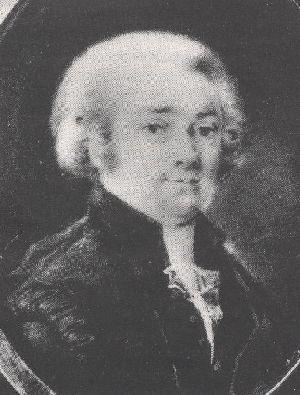Prekkajakku (Ernst Gustaf von Willebrand)
Who was Prekkajakku? The name has probably been abbreviated from the Finnish word ’prenikkajakku’ (decoration jacket) and references decorations or orders of merit. It was the name given by the people to Provincial Governor Ernst Gustaf von Willebrand who bought the Jokioinen Estate in 1791 after taking care of the Estate for years before that.
The history of the municipality of Jokioinen is tightly interwoven with that of the Jokioinen Estate. The Estate has been owned by many well-known families, such as the Flemings, the Kruus, the Reuterholms and the Mannerheims, but Provincial Governor von Willebrand stays the most notable owner of the Estate. He was a vigorous and efficient person who, unlike his predecessors, also lived in Jokioinen and whose work is still visible and in use.
In Provincial Governor von Willebrand, the Jokioinen Estate got an owner who began the industrialisation process in Jokioinen and soon made it one of the most notable industrial areas of the Tavastia region. The Provincial Governor founded many workshops in the Estate area, among them a brick factory, a brewery and a textile factory.
Promoted to General, von Willebrand could manage the army’s orders to his own companies and jealous comrades suspected him of abusing his position and connections to his own advantage. During the Finnish War, he did business with the Russian occupiers and of these sales, the soldiers made a song which demonstrates the General’s tendency to put his own good ahead of everything else:
”Kyllä Prekka-Jakku tiesi,
kun myllyn rakensi,
että Ryssä Turkuun tuli
ja jauhoja tarvitsi”
(“Prekka-Jakku did know
when building a mill
that the Russians would come to Turku
and require flour”)
Provincial Governor Willebrand developed agriculture and animal husbandry; towards the end of 1790s, the Estate got a new cowhouse made of brick, the first one of its type in Finland. The construction of a new main building was began in 1794. This 30-room plastered brick building is the earliest specimen of neo-classical estate style in Finland and at its time it was the second largest building in Finland.
During Willebrand’s time, the Jokioinen Estate was favoured by the bourgeois population of the nearby regions as a place to visit, and also the King of Sweden, on his travels in Finland, stayed the night at the Estate. The General’s influence was seen everywhere, and his wife took care of housekeeping herself. Life was modest; there were only four dishes even at dinner. However, when there were guests, the offerings were excellent. The Estate and the park around it were full of life. Aurora Karamzin and her sisters spent summers in Jokioinen, because the Willebrands were their grandparents.
The years 1808 and 1809 were one of the turning points in the history of Jokioinen. Finland was ceded from Sweden to Russia and made an autonomic Grand Duchy. At the end of 1809, General von Willebrand died at 58 years of age in the middle of executing many of his plans. His wife Wendla took care of the Estate after him until her own death in 1820, when the Estate was sold to two sons-in-law.
There are many contradicting views on the character of General E. G. von Willebrand. Many thought him a cold-blooded and cunning person who only cared for his own good and a hard businessman. He taxed the tenant farmers heavily and they sued him for groundless taxes, but in response, the General only ordered harsh counterblows to the law suit. There are nearly no known signs of the General taking care of his subordinates and there are many tales of his time.
A completely different view on the General was had by the guests of the Estate who have remarked that the General was polite, pleasant and humble, and free especially when there were no ladies present. His wisdom and vigour were admired.
General and Mrs von Willebrand have been buried in the Estate park on the spot the General himself picked during his lifetime. He’s said to have remarked that on his daily walk, that spot ‘always gave him such a calm feeling’.
The vigorous Prekkajakku was ahead of his time and was able to look into the future bravely and without prejudice.
Written by Laila Liski
Sources:
Jokioisten historia
a report of the National Board of Antiquities |
|
![Logo [Jokioisten kunta]](client/jokioinen/images/logo.png)
![Logo [Jokioisten kunta]](client/jokioinen/images/logo_blue.png)
![Logo [Jokioisten kunta]](client/jokioinen/images/logo_green.png)
![Logo [Jokioisten kunta]](client/jokioinen/images/logo_orange.png)
![Logo [Jokioisten kunta]](client/jokioinen/images/logo_yellow.png)
![Logo [Jokioisten kunta]](client/jokioinen/images/logo_jokilaani.png)



![Logo [Jokioisten kunta]](client/jokioinen/images/footer_logo.png)

